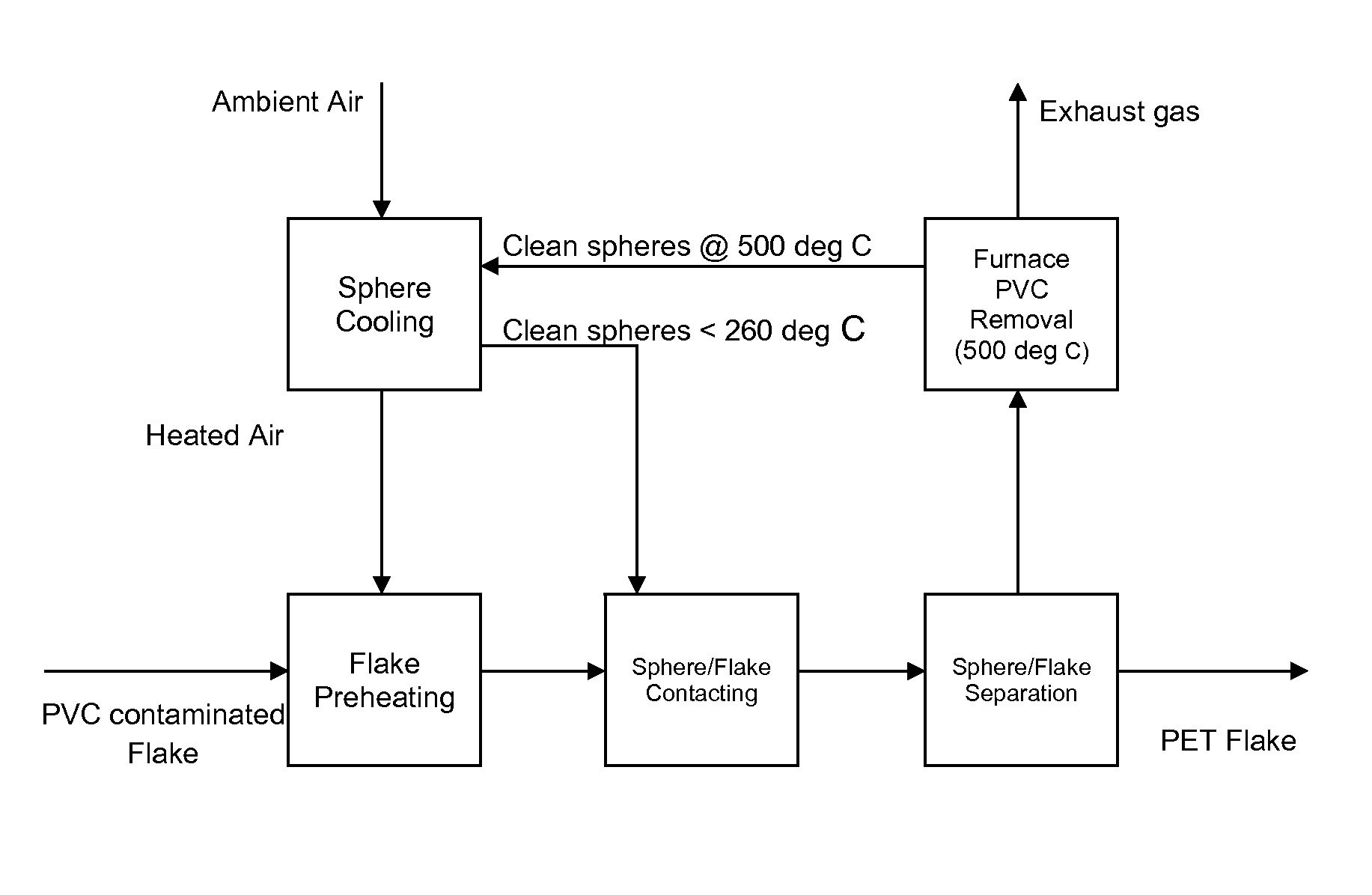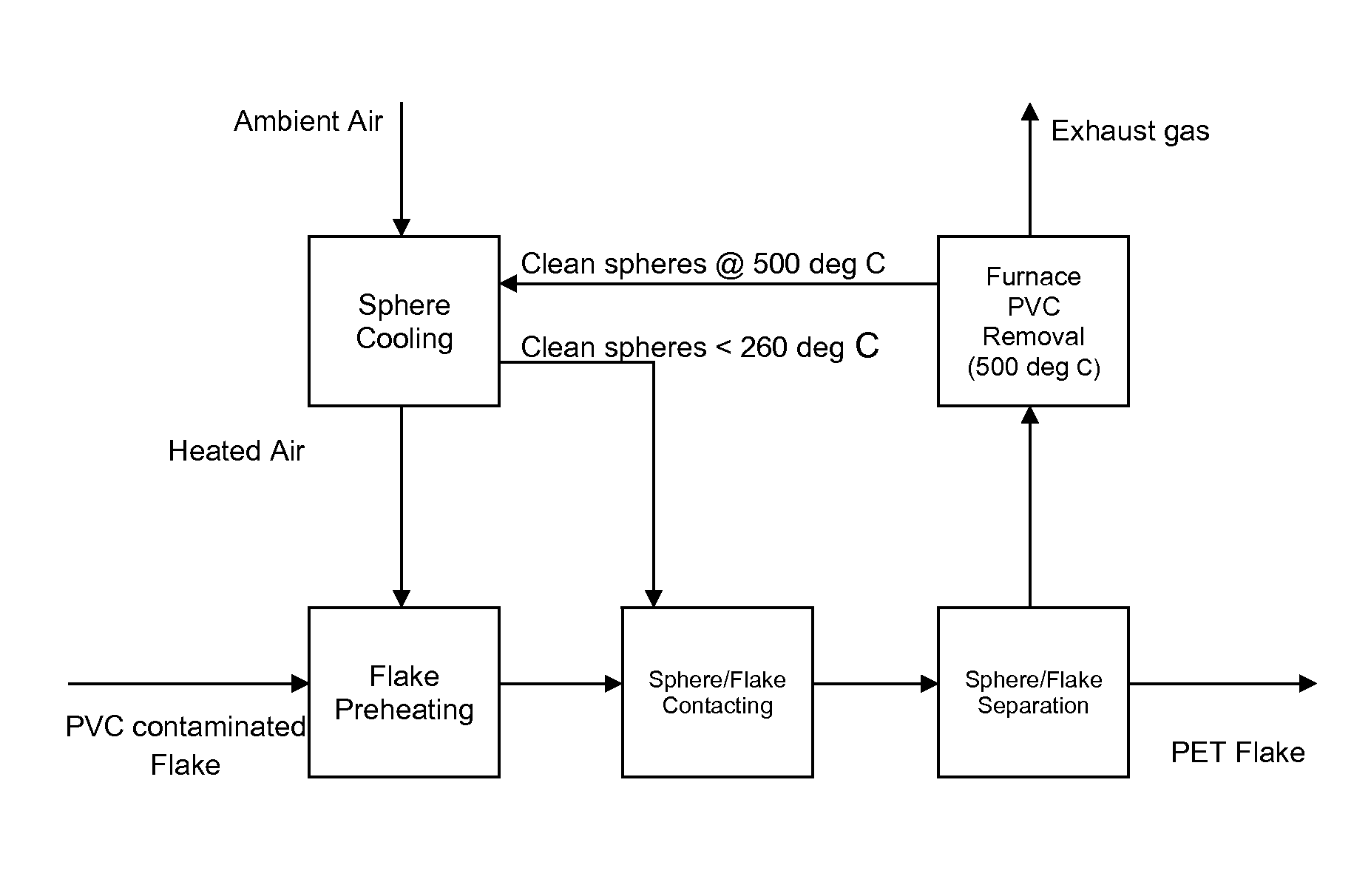Separation of components of plastic
a plastic and component technology, applied in the field of plastic component separation, can solve the problems of reducing the intrinsic viscosity of pet, pvc degrading at pet extrusion temperature, and the most difficult and expensive step of the recycling process, and achieves the effect of simple, efficient and robust separation, and high separation efficiency
- Summary
- Abstract
- Description
- Claims
- Application Information
AI Technical Summary
Benefits of technology
Problems solved by technology
Method used
Image
Examples
Embodiment Construction
[0042]The PVC contaminated flake is pre-heated before being contacted with the spherical particles which have themselves been pre-heated to a suitable temperature. Under exposure to this temperature the PVC becomes sticky in texture and adheres to the particles. The PET flakes are then separated from the particles with the agglomerations of PVC thereon using the difference in their relative densities. The particles with the agglomerations of PVC are then transferred into a furnace heated to about 500° C. to remove the PVC from the particles. The clean spheres are allowed to cool under ambient air from 500° C. to below about 260° C. The heated air from the cooling process is used to pre-heat a new batch of the PVC contaminated flakes before the flakes are contacted with the cooled particles to begin the process once more.
[0043]Tests have shown that substantially linear plots can be obtained for the efficiency of the particles in capturing the contaminant (on a mass basis) against the...
PUM
| Property | Measurement | Unit |
|---|---|---|
| diameter | aaaaa | aaaaa |
| diameter | aaaaa | aaaaa |
| diameter | aaaaa | aaaaa |
Abstract
Description
Claims
Application Information
 Login to View More
Login to View More - R&D
- Intellectual Property
- Life Sciences
- Materials
- Tech Scout
- Unparalleled Data Quality
- Higher Quality Content
- 60% Fewer Hallucinations
Browse by: Latest US Patents, China's latest patents, Technical Efficacy Thesaurus, Application Domain, Technology Topic, Popular Technical Reports.
© 2025 PatSnap. All rights reserved.Legal|Privacy policy|Modern Slavery Act Transparency Statement|Sitemap|About US| Contact US: help@patsnap.com



